
Cennet and Cehennem are the names of two large sinkholes in the Taurus Mountains, in Mersin Province, Turkey. The sinkholes are among the tourist attractions of the province.

Tokmar Castle is a castle ruin in Mersin Province, Turkey
Aphrodisias, sometimes called Aphrodisias of Cilicia to distinguish it from the town of the same name in Caria, was a port city of ancient Cilicia whose ruins now lie near Cape Tisan in Mersin Province, Turkey.

Silifke Bridge is a historical bridge in Mersin Province, Turkey.

Tekfur ambarı is a large cistern in Silifke ( Seleukeia) ilçe district center of Mersin Province, Turkey. A part of the city of Silifke, it is situated to the west of city center and to the east of Silifke castle at 36°23′N33°55′E. It was built during the early years of Byzantine Empire. The building material is face stone. The west to east dimension is 46 metres (151 ft) and the north to south dimension is 23 metres (75 ft). The depth of the cistern is 14 metres (46 ft). The total water capacity is about 12 000 tonnes. At the east side of the cistern there is a spiral staircase. There are 8 niches at the 46 m dimension and 5 niches at the 23 m dimension.

Silifke Castle is a medieval castle in Turkey.

Silifke Museum is in Silifke district of Mersin Province, Turkey.
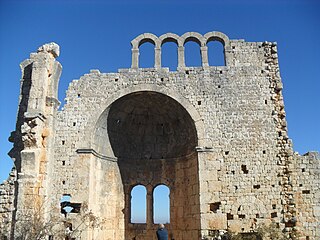
Öküzlü is an archaeological site in Mersin Province, Turkey.
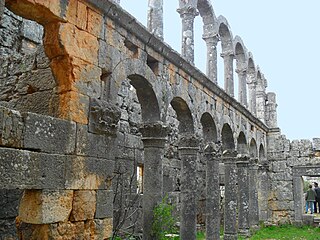
Cambazlı is an archaeological site in Mersin Province, Turkey
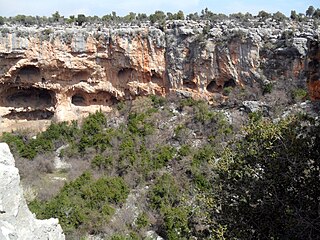
Akhayat is a sinkhole in Mersin Province, Turkey.
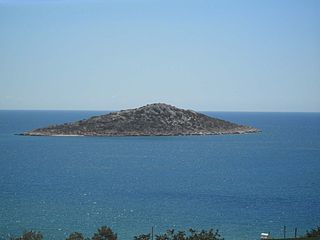
Boğsak is a Mediterranean islet in Mersin Province, Turkey.

Imbriogon was an ancient place in Cilicia Trachea, whose modern name is Demircili in Silifke district, in Mersin province, Turkey. It lay on the road from Seleukia in the Kalykadnos to Diocaesarea (Uzuncaburç), about 8 kilometres north of Seleukia.

Softa Castle is a ruined castle in Bozyazı ilçe (district) of Mersin Province, Turkey.

Silifke Atatürk Museum is a two-storey house in Silifke which hosted the founder of modern Turkey, Mustafa Kemal Atatürk, and his wife in 1925.

Güvercin Islet is a Mediterranean islet of Turkey. It is a part of Silifke ilçe (district) of Mersin Province. It is at 36°14′38″N33°48′38″E and situated about 200 metres (660 ft) to main land. The islet is quite small; only 3,000 square metres (32,000 sq ft). There are ruins of late Roman Empire era in this otherwise unnotable island. The ruins are in the north east side of the island. The ruins probably belonged to a mansion. The construction material is rectangular stone. There are tombs, ceramics and a part of a mosaic floor in the island.
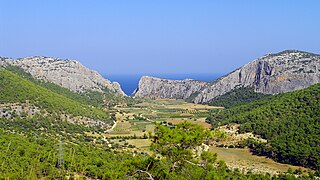
Eğribük is a small Mediterranean bay with ruins in the beach, in south Turkey.

Yılanlı Ada is a small Mediterranean island in Turkey.

Olba Aqueduct is a ruined Roman aqueduct in Mersin Province, southern Turkey.

Uzuncaburç is an archaeological site in Mersin Province, Turkey, containing the remnants of the ancient city of Diokaisareia or Diocaesarea.

Donuktaş is a Roman temple in Tarsus ilçe (district) of Mersin Province, southern Turkey.



















